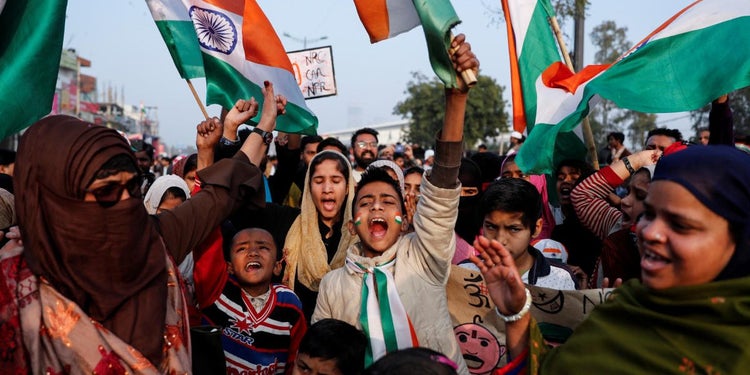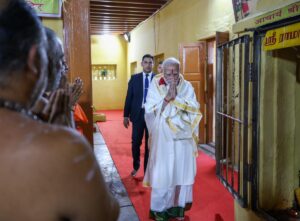Chitra Padmanabhan
In The Black Jacobins, a classic work on the Haitian Revolution (1791–1803)—the only successful slave revolt in history, which erupted in the wake of the French Revolution—C.L.R. James describes a fascinating moment in the confrontation between Napoleon’s army and the slaves of the colony:
“The soldiers still thought of themselves as a revolutionary army. Yet at nights they heard the blacks in the fortress singing the Marseillaise, the Ca Ira, and the other revolutionary songs. Lacroix records how these misguided wretches, as they heard the songs, started and looked at the officers as if to say, ‘Have our barbarous enemies justice on their side? Are we no longer the soldiers of Republican France? And have we become the crude instruments of policy?’”
There’s something about the sheer ability of ideas and symbols to resound across time and space, providing the dispossessed the life force to turn an oppressive situation around.
The contexts may vary widely, but in ways big and small, the fight for justice and dignity often starts with reclaiming the inclusive and humane potential of symbols that have become calcified. That’s when establishments, somewhat nonplussed, wonder about the capriciousness of ‘their’ symbols, ready to go from being pennants of crushing might to becoming a sheltering sky for hearts heavy with the injustices they bear.
Something like that seems to be happening in our midst as well. Take our national flag, for instance. Most of us see it as a symbol of our country’s sovereign power and prestige in the world. Yet it also brings to mind the suppleness that comes with catching the cadence of untold aspirations and the most tentative whisper from the margins.
In the past five years or so, that image of the flag has receded, even as it has been more visible on the Indian skyline than before, but with shrunken meanings and associations. The towering flags that have been placed in public places all over the country have become the totem poles around which an official festival of nationalism is being orchestrated. The mantra is simple: only a follower of Hindutva is a nationalist, hence, the national flag represents only them; the rest are anti-nationals, to be denounced—national flag in hand.
Under the tutoring hands of the regime and its hydra-headed ‘parivar’, the flag has been used as a weapon, like never before, to brand, isolate and target its own people—and especially the minorities—as anti-national. Its warp and weft infected with the ideological hauteur of Hindutva, the cloth from which their flag is cut is hardening, in danger of losing the very possibility of being able to hold a multiplicity of dreams that are life-affirming. Just as a fabric that is not made of organic material cannot breathe, bearing the imprint of an inorganic pattern of exclusion has taken its toll on the symbol itself.
Until now, that is. Relief for the flag is at hand—from the very people who are being excluded from the narrative of the nation by being branded as those who are anti-national and insult the national flag. Be it the women of Shaheen Bagh, the students of Jawaharlal Nehru University and Jamia Millia Islamia or the Bhim Army of Chandra Shekhar Aazad, in protest after protest against the Citizenship (Amendment) Act, 2019 (CAA) and the National Register of Citizens (NRC), they have held the Indian flag aloft to assert that they too belong to India—they too are citizens of this country, represented in the weave of the Indian flag.
Imagine the scene at Delhi’s Shaheen Bagh where a core group of women, many with babes in their arms, have been present day after day in bone-chilling cold, to assert their rootedness in the soil where they stand, and to assert that the destiny of their children is co-terminus with the fate of the nation. Suddenly you see a flag painted on a smooth cheek come alive as it warms to the touch of the skin, and in that moment you realise a basic truth. These women, children, youngsters and men are the ones now taking forward the unfinished task of our republic—of working towards the equality and dignity that has been promised to all citizens under the constitution. By laying claim to their rightful place within the capacious folds of the Indian flag, they have rescued it as well.
This then is a moment which holds the opportunity to turn an oppressive context around in a humane manner. One can’t remember any other occasion in recent times when young and old, women and men, chose to mould themselves in the image of the constitution so passionately; similarly, the flag was never so vibrant as when adorning a cheek in Shaheen Bagh. A friend describes this moment also as a semiotic turnaround, in which a symbol invested with the idea of power and hegemony, sheds the burden and stretches itself to accommodate innumerable new meanings of resistance.
One can’t help but hope that those caught in the web of divisive politics might start wondering—have our ‘enemies’ justice on their side; have we been reduced to mere instruments of crude ideology?
(Chitra Padmanabhan is a journalist and author.)




